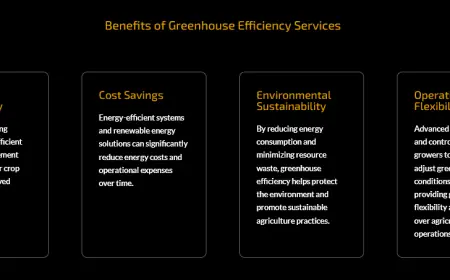United States Visual Computing Market 2029 Forecast Report: Growth Drivers, Size, and Trends
According to TechSci Research report, “United States Visual Computing Market – By Region, Competition, Forecast & Opportunities, 2019-2029F, The United States Visual Computing Market was valued at USD 11.63 Billion in 2023 and is expected to reach USD 43.72 Billion in 2029 with a CAGR of 24.51% during the forecast period.
Request For Sample Copy of Report For More Detailed Market insight: https://www.techsciresearch.com/sample-report.aspx?cid=1452#requestform
Industry Key Highlights
-
Market Valuation: Estimated at USD 11.63 billion in 2023, with a forecasted rise to USD 43.72 billion by 2029.
-
Growth Rate: CAGR of 24.51%, underscoring rapid adoption of visual computing solutions across verticals.
-
Top Growth Verticals: Automotive, healthcare, gaming, retail, media & entertainment.
-
Deployment Trends: Cloud-based visual computing solutions dominate the deployment model landscape.
-
Regional Spotlight: The Southwest U.S. emerges as the fastest-growing region, driven by innovation hubs and expanding tech ecosystems.
-
Core Technologies: Augmented Reality (AR), Virtual Reality (VR), 3D visualization, simulation, and AI-integrated visual computing tools.
Browse over XX market data Figures spread through XX Pages and an in-depth TOC on the " United States Visual Computing Market"@https://www.techsciresearch.com/report/united-states-visual-computing-market/1452.html
Market Drivers
1. Autonomous Vehicles and the Future of Mobility
The development and commercialization of autonomous vehicles (AVs) is a primary force accelerating visual computing growth in the U.S. As AV systems rely on real-time image processing from cameras, LiDAR, and radar sensors, visual computing forms the backbone of decision-making capabilities. These technologies enable AVs to detect objects, interpret traffic signals, and navigate unpredictable driving environments safely.
Advanced visual computing solutions are also instrumental in training and validating self-driving algorithms. Through simulated driving environments, AI models are tested under countless conditions, improving reliability and reducing on-road testing time. As the industry transitions to Level 3 and Level 4 autonomy, the need for robust visual computing infrastructure becomes critical.
2. Rise of AI in Real-Time Decision-Making
Artificial intelligence has moved beyond its experimental phase and now serves as a real-time enabler in visual computing applications. In manufacturing, AI-integrated systems detect microscopic defects with unmatched precision. In retail, smart cameras analyze customer preferences, enabling dynamic pricing, layout optimization, and personalized recommendations.
AI’s synergy with visual computing also powers advanced surveillance, where intelligent video analytics can monitor hundreds of feeds simultaneously—identifying threats, tracking anomalies, and automating alerts in real time. As AI algorithms become more sophisticated, visual computing will become increasingly autonomous, efficient, and proactive.
Emerging Trends
1. Immersive Technologies in Mainstream Applications
Virtual Reality (VR), Augmented Reality (AR), and Mixed Reality (MR) are no longer confined to gaming. These technologies are gaining traction in education (immersive learning), healthcare (surgical simulation), and retail (virtual try-ons). Interactive environments built on visual computing engines are revolutionizing how people experience information and services.
From remote field training for industrial employees to VR-based pain management therapy, the potential of immersive tech powered by visual computing is immense. This transformation is helping businesses boost user engagement, training effectiveness, and decision-making.
2. High-Fidelity Simulation for Training and Design
Simulation and modeling applications are experiencing exponential growth. In healthcare, visual computing enables 3D anatomical modeling for pre-surgical planning. In defense, military personnel undergo combat simulations through VR training platforms, reducing real-world risks.
Product design teams across industries are leveraging digital twins—exact digital replicas of real-world assets—for rapid prototyping and stress-testing. As digital twins become more accurate and visual fidelity improves, innovation cycles are shrinking, leading to faster go-to-market timelines.
3. Integration with Edge Computing and 5G
As edge computing and 5G infrastructure become mainstream, they’re redefining the capabilities of visual computing systems. With 5G enabling ultra-low latency, visual data processing can happen at the edge of networks—in real-time, without reliance on centralized servers.
This is game-changing for applications like smart cities, drone navigation, and automated manufacturing floors, where real-time decisions are essential. The fusion of edge and visual computing will unlock next-gen applications in surveillance, transportation, and energy.
Key market players in the United States Visual Computing market are: -
- NVIDIA Corporation
- Advanced Micro Devices, Inc.
- Intel Corporation
- Apple Inc.
- Microsoft Corporation
- Alphabet Inc.
- Sony Group Corporation
- Samsung Electronics Co. Ltd.
- Autodesk, Inc.
- Adobe Inc.
Customers can also request for 10% free customization on this report.
Contact US:
Techsci Research LLC
420 Lexington Avenue, Suite 300,
New York, United States- 10170
Tel: +13322586602
What's Your Reaction?
 Like
0
Like
0
 Dislike
0
Dislike
0
 Love
0
Love
0
 Funny
0
Funny
0
 Angry
0
Angry
0
 Sad
0
Sad
0
 Wow
0
Wow
0



















































